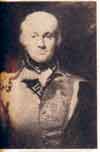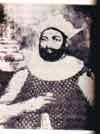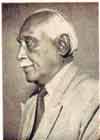The
British taste first signs of discontent
Today 189 years ago -September 10,
1817 to be exact - marked the beginning of the Uva or
Wellassa rebellion against the British. To understand
the reasons for the rebellion, it's best that we briefly
look at the developments after the British took over
the Kandyan kingdom.
 |
| Governor Sir Robert Brownrigg (1812-20) |
Following the capture of the Kandyan
kingdom, the British became masters of the entire country
in March 1815. The Kandyans soon found that they had
to get used to a different form of administration from
what they had been used to for centuries under a Sinhalese
king. In January 1816, Sri Vickrema Rajasinghe, the
deposed King of Kandy was taken to Madras and from there
to Vellore where he died sixteen years later.
The Kandyan provinces were placed
under the control of a Resident, Sir John D'Oyly and
a small military unit was kept in Kandy to maintain
law and order. Ehelepola who helped the British in their
attempt to capture the Kandyan kingdom expected to be
rewarded for the services he rendered by handing over
the administration to him. He was bitterly disappointed
and declined to accept any high office but indicated
that he simply wished to remain “a friend of the
British Government.” After that, Molligoda was
appointed first adigar.
Meanwhile, though the Kandyan people
were happy to get rid of the tyrant king, they were
not entirely happy to be governed by foreigners. The
Kandyan chieftains were also a discontented lot because
they realised that under the British, they did not have
much say. Their powers had been taken away to a great
extent. They could not act the way they pleased as they
were used to. They gradually began to stir up the people
to revolt.
 |
| Sri Vickrema Rajasinghe, last
King of Kandy |
The first outbreak was in Uva. A pretender
was set up in the guise of a Nayakkar prince claiming
to be a member of the deposed royal family. His name
was Vilbave, an ex-monk and he posed as one Doraisami.
Having appeared in the Kataragama devale soon after
the Esala festival there, he declared that he had been
chosen by the God of Kataragama to be king of Sri Lanka.
He received the support of Keppetipola, the dissave
of Uva who defected to the side of the rebels. Keppatipola
was Ehelepola's brother-in-law and soon took over the
leadership of the rebellion.
Six days after the start of the revolt,
Sylvester Douglas Wilson, Assistant Resident & Agent
at Badulla was killed by the rebels. The British were
ruthless in their efforts to crush the rebellion. They
burnt down villages and harassed and killed the villagers,
who in turn retaliated. The British troops faced many
hardships and suffered due to disease. As the revolt
spread covering many areas, the British were seriously
thinking of withdrawing the troops when they found that
the Kandyans who had suffered enough, were willing to
surrender.
The chiefs had grown jealous of each
other and were disunited. Keppetipola was defeated and
taken prisoner and the rebellion was over by October
1818. Two of the rebel chiefs, Keppetipola and Madugalle
of Dumbara were beheaded. The British suspected that
Ehelepola was also involved with the rebellion and he
was banished to the island of Mauritius where he died
in 1829.
Renowned editor
The birth of a stalwart in Sinhala
journalism occurred on September 10, 1890. He is Piyasena
Nissanka, who was editor of the 'Dinamina' for many
decades. He was a close associate of D. R. Wijewardene
from the time he joined Lake House in 1918 until Wijewardene's
death in 1950.
 |
| Piyasena Nissanka - reputed newspaper
editor |
While serving in the editorial staff
of the 'Dinamina', he was appointed as editor of the
'Silumina' when it was started as a Sinhala weekly in
1930. He belonged to the vintage of H. S. Perera, Martin
Wickramasingha, M. C. F. Perera and Alexander Welivita,
pioneers of Sinhala journalism. He returned to the 'Dinamina'
as editor and served over thirty years in that capacity.
In fact, he served as editor alternatively in both newspapers
several times. He was the longest to occupy the editorial
chair of the 'Dinamina'.
Hailing from the village of Kandeliyaddapaluwa
close to Kadawata, he was a typical villager who revelled
in relating folk stories and reciting folk verses. He
had an easy style of writing and his column written
under the pen name 'Basuru' was a very popular one.
|
